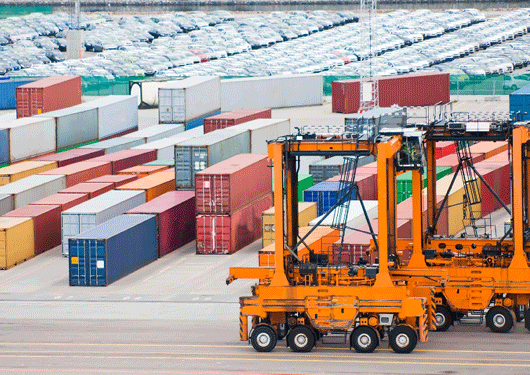
Visit Our Sponsors |
|
|
|
|
|
|
|
|
|
|
|
|
|
|
|
|
|
|
|
|
|
|
|
|
|
|
|
|
|
|
|
|
|
|
|
|
|
|

The Index increased for the third consecutive month in January, according to the latest industry study undertaken by Transport Intelligence. The overall index, an average of the current and expected situation, increased 0.8 points to 48.8 from 48.0 in the last month of 2012.
Increased sentiment among sea forwarders drove the overall increase. In terms of the current logistics situation, the sea freight index increased 1.8 points to 46.6 in the first month of 2013. Meanwhile, airfreight continued to lag, down 0.8 points to 39.7. At below the 50.0 mark, both indices indicate weaker volumes relative to the time of year. Lucy Palmer, economist at Transport Intelligence, says: "While the sea freight index has recorded steady increases over the last three months, developments in the index for airfreight have been less consistent. Economic uncertainty continues to weigh more heavily on airfreight volumes as shippers switch to ocean freight."
In terms of the outlook for the next six months, volumes are expected to improve relative to the time of year. In January 2013, both sea and air forwarders expressed slightly more optimism surrounding the six-month outlook compared with December. For airfreight, the logistics expectations index increased 0.4 points to 52.0, while for sea freight the index was up 1.7 points to 56.9.
This month survey respondents were asked whether they experienced a peak shipping season in 2012. Some 56 percent indicated that they had not experienced a seasonal increase in volumes in 2012, while the remaining 44 percent had recorded a seasonal increase.
To download a full copy of the January 2013 results click here.
The Stifel Nicolaus Logistics Confidence Index is generated from an extensive survey of global logistics professionals, asked to provide their views on current levels of volumes in the industry and their expectations for six months' time. An index value of 50 indicates no change in the volumes currently being experienced for the time of year; above 50 indicates higher volumes, while below 50 indicates lower volumes.
Source: Transport Intelligence
RELATED CONTENT
RELATED VIDEOS
Timely, incisive articles delivered directly to your inbox.






